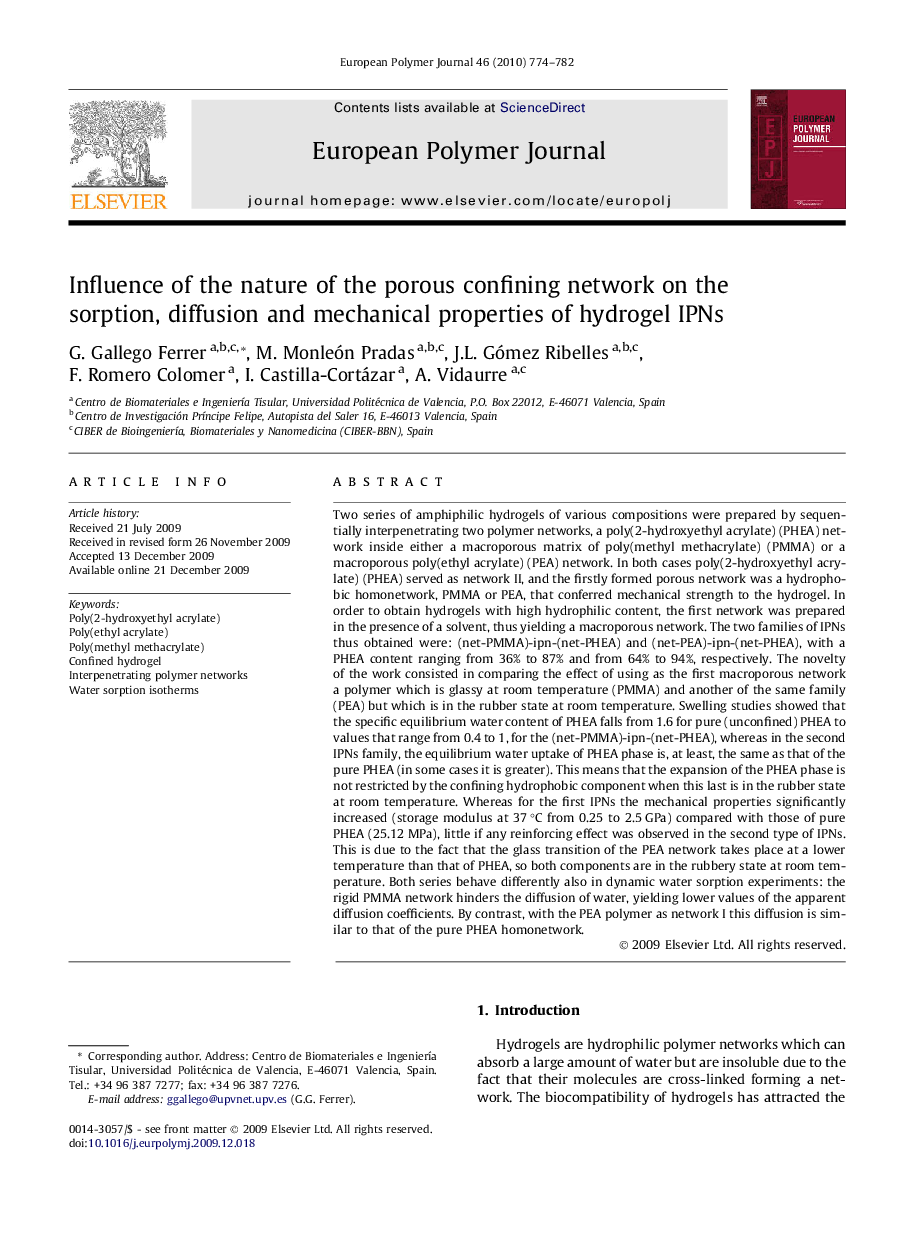| کد مقاله | کد نشریه | سال انتشار | مقاله انگلیسی | نسخه تمام متن |
|---|---|---|---|---|
| 1402532 | 984767 | 2010 | 9 صفحه PDF | دانلود رایگان |

Two series of amphiphilic hydrogels of various compositions were prepared by sequentially interpenetrating two polymer networks, a poly(2-hydroxyethyl acrylate) (PHEA) network inside either a macroporous matrix of poly(methyl methacrylate) (PMMA) or a macroporous poly(ethyl acrylate) (PEA) network. In both cases poly(2-hydroxyethyl acrylate) (PHEA) served as network II, and the firstly formed porous network was a hydrophobic homonetwork, PMMA or PEA, that conferred mechanical strength to the hydrogel. In order to obtain hydrogels with high hydrophilic content, the first network was prepared in the presence of a solvent, thus yielding a macroporous network. The two families of IPNs thus obtained were: (net-PMMA)-ipn-(net-PHEA) and (net-PEA)-ipn-(net-PHEA), with a PHEA content ranging from 36% to 87% and from 64% to 94%, respectively. The novelty of the work consisted in comparing the effect of using as the first macroporous network a polymer which is glassy at room temperature (PMMA) and another of the same family (PEA) but which is in the rubber state at room temperature. Swelling studies showed that the specific equilibrium water content of PHEA falls from 1.6 for pure (unconfined) PHEA to values that range from 0.4 to 1, for the (net-PMMA)-ipn-(net-PHEA), whereas in the second IPNs family, the equilibrium water uptake of PHEA phase is, at least, the same as that of the pure PHEA (in some cases it is greater). This means that the expansion of the PHEA phase is not restricted by the confining hydrophobic component when this last is in the rubber state at room temperature. Whereas for the first IPNs the mechanical properties significantly increased (storage modulus at 37 °C from 0.25 to 2.5 GPa) compared with those of pure PHEA (25.12 MPa), little if any reinforcing effect was observed in the second type of IPNs. This is due to the fact that the glass transition of the PEA network takes place at a lower temperature than that of PHEA, so both components are in the rubbery state at room temperature. Both series behave differently also in dynamic water sorption experiments: the rigid PMMA network hinders the diffusion of water, yielding lower values of the apparent diffusion coefficients. By contrast, with the PEA polymer as network I this diffusion is similar to that of the pure PHEA homonetwork.
Figure optionsDownload as PowerPoint slide
Journal: European Polymer Journal - Volume 46, Issue 4, April 2010, Pages 774–782